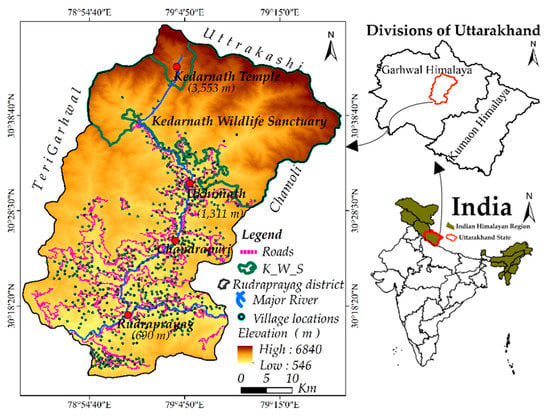

Remote Sensing, Vol. 13, Pages 4090: A Novel Approach for Forest Fragmentation Susceptibility Mapping and Assessment: A Case Study from the Indian Himalayan Region
Remote Sensing doi: 10.3390/rs13204090
Authors:
Amit Kumar Batar
Hideaki Shibata
Teiji Watanabe
An estimation of where forest fragmentation is likely to occur is critically important for improving the integrity of the forest landscape. We prepare a forest fragmentation susceptibility map for the first time by developing an integrated model and identify its causative factors in the forest landscape. Our proposed model is based upon the synergistic use of the earth observation data, forest fragmentation approach, patch forests, causative factors, and the weight-of-evidence (WOE) method in a Geographical Information System (GIS) platform. We evaluate the applicability of the proposed model in the Indian Himalayan region, a region of rich biodiversity and environmental significance in the Indian subcontinent. To obtain a forest fragmentation susceptibility map, we used patch forests as past evidence of completely degraded forests. Subsequently, we used these patch forests in the WOE method to assign the standardized weight value to each class of causative factors tested by the Variance Inflation Factor (VIF) method. Finally, we prepare a forest fragmentation susceptibility map and classify it into five levels: very low, low, medium, high, and very high and test its validity using 30% randomly selected patch forests. Our study reveals that around 40% of the study area is highly susceptible to forest fragmentation. This study identifies that forest fragmentation is more likely to occur if proximity to built-up areas, roads, agricultural lands, and streams is low, whereas it is less likely to occur in higher altitude zones (more than 2000 m a.s.l.). Additionally, forest fragmentation will likely occur in areas mainly facing south, east, southwest, and southeast directions and on very gentle and gentle slopes (less than 25 degrees). This study identifies Himalayan moist temperate and pine forests as being likely to be most affected by forest fragmentation in the future. The results suggest that the study area would experience more forest fragmentation in the future, meaning loss of forest landscape integrity and rich biodiversity in the Indian Himalayan region. Our integrated model achieved a prediction accuracy of 88.7%, indicating good accuracy of the model. This study will be helpful to minimize forest fragmentation and improve the integrity of the forest landscape by implementing forest restoration and reforestation schemes.
 This information was first published on https://www.mdpi.com/2072-4292/13/20/4090
This information was first published on https://www.mdpi.com/2072-4292/13/20/4090





More Stories
Facebook Fact-Checker CENSORS Heritage Video Quoting Biden’s Own Words on Gas Policy – March 19, 2022 at 06:49PM
General Mills (GIS) Gains But Lags Market: What You Should Know
CAD Designer